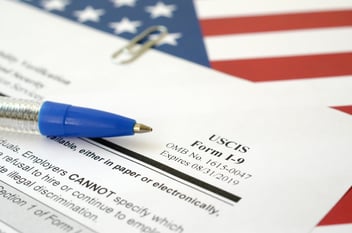What is FMLA?
FMLA is the Family and Medical Leave Act (FMLA).
FMLA is a federal law that provides job-protected unpaid leave to eligible employees of covered employers who need to be absent for a qualifying medical event, new-child bonding, or military-related reason. FMLA does not require the employer to pay the employee while they are on leave.
What is a covered employer?
A covered employer can be a privately owned business with 50+ employees, a public agency, or an elementary or secondary school.
Who is an eligible employee?
- An individual employed with the company for a minimum of 12 months
- An employee that has worked at least 1,250 hours in the last 12 months
- They work at a location with 50 or more employees within 75 miles
Duration of leave:
An eligible employee is entitled to a total of 12 weeks of FMLA leave per 12- month period. Military caregivers are given up to 26 weeks of leave.
Reasons for FMLA leave?
- Bonding with a new child (birth, adoption, or foster placement)
- For the employee’s own serious health condition
- To care for a covered family member with a serious health condition
- Military or active duty
- To provide care for an injured covered service member
Notice Requirements and certifications:
It is the responsibility of the employer to provide a general notice at the time of employment as well as additional notices to individual employees in need of leave.
Employees must provide notice of leave and information to support.
Benefit Continuation:
Employees on FMLA leave remain entitled to the same group health benefits they would have received if they were working routinely. An employer may require employees taking FMLA leave to pay their share of health plan premiums, although they cannot be required to pay more than what they would have paid if they had remained actively employed. The employee’s other benefits such as paid-leave accruals must be maintained the same as they are for employees on any other type of leave.
Return to work:
The employee must be returned to the same position or an equivalent position unless the employee physically cannot perform the essential job functions.
Equivalent position:
A position that is virtually identical to the job they have been working in terms of compensation, pay, benefits, and other employment terms – including location and shift.
Calculating FMLA 12-Month Period:
Federal law allows employers to choose from four methods to establish a 12-month period. Regardless of which method the employer chooses it must be applied uniformly to all employees taking FMLA leave.
- The calendar year
- Any fixed 12-month period such as a fiscal year or period starting on the employee’s anniversary date.
- 12-month period measured forward from the date an employee’s FMLA leave begins.
- A rolling 12-month period measured backward from the date an employee uses any FMLA leave.
Fixed method:
Advantages of a fixed method:
- Ease of administration – don’t have to worry about looking forward or backward
- Employer can use the same 12-month period for all employees
Disadvantages of the fixed method:
- This way of calculating allows employees to stack together up to 24 weeks of consecutive leave extending over two separate leave years.
- The employer can't limit leave based on operational hardship.
Measuring forward:
Measuring from the date the employee starts leave. The employee would be eligible for 12 weeks moving forward from that date.
Measuring backward:
Calculated on a rolling basis and starts immediately preceding 12 months.
No matter the method your company decides to go with, it is essential that employers have the chosen method written in their policy or they will be forced to use the method that is most beneficial to the individual employee.
Changing methods
Employers looking to change the method in which they calculate the FMLA 12-month leave are required to provide employees with 60 days notice prior to adopting the new approach.
No matter what, FMLA records must be kept for a minimum of 3 years.
FMLA and Wage Replacement–
FMLA is a federal law that protects the employee’s right to return to a job at the company. Workers’ Compensation is a state-mandated benefit to pay for medical care and income protection of employees who are injured on the job or become ill as a result of their job. Short term disability is an employer-sponsored program that is intended to provide a continuation of income for a limited period of time when an employee is unable to work due to a disability relating to an off-the-job accident or illness.
While FMLA protects employment and return to work in a qualifying event, it is recommended that employers also provide wage replacement benefits. Benefits can be provided through short term disability or workers’ compensation and should run concurrently with the initiation of FMLA. A wage replacement benefit process runs tandemly and parallel with FMLA; dual and sometimes overlapping paperwork is necessary to allow these contemporaneous processes to remain in their legally separate silos.
The consequence of not running FMLA in tandem with wage replacement benefits is that it allows the employee to use FMLA after they have exhausted short term disability or worker’s compensation and therefore extends the time in which the employer must hold their job.
How can an employer limit the abuse of intermittent FMLA leave?
- Understand the laws and your company’s policy to catch abuse patterns.
- Develop a policy that has clear guidelines and rules
- Hold the employee accountable for complying with the conditions described in his or her medical certification.
- Enforce notice requirements
- Provide the healthcare provider with a list of essential job functions. The medical provider will be able to review job functions and determine that they are in fact unable to perform the essential functions.
- Work with your Leave of Absence Manager for FMLA benefits to clarify with the physician the anticipated frequency and duration of intermittent leaves of absence.
While most employees use FMLA policies legitimately, it is important to have a clear, consistent, and well-written policy to protect your company against FMLA abuse. It is also crucial for employees to be aware of when and what information they are expected to present to certify or prove the condition.



